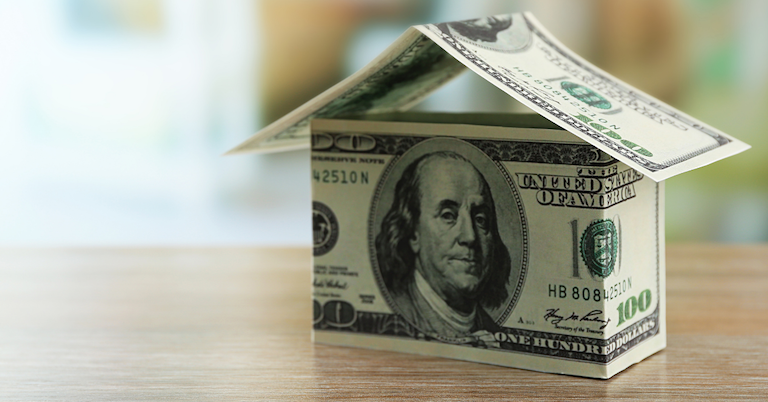Many people look into the concept of investing in rental properties due to the incredible return on investments it can provide. What people often don't realize is that purchasing a rental property isn’t the same as purchasing a home that you would own yourself. Financial requirements vary greatly and can lead new investors to run away from the idea rental property investments.
When buying a traditional property to own, buyers have the option to choose how much to put down towards a down payment. With rental properties, there is significantly less flexibility. Most loans for rental properties require a down payment of at least 20%. For most, that is a larger sum of money than they probably want to put down.
As a beginner investor, it can be difficult to find the funds to afford such a hefty down payment. However, just because investing in rentals can be expensive doesn't mean it has to be. There are several ways to buy rental properties with little to no money down. With the following financing options and a bit of research, you can easily afford to purchase rental properties without breaking the bank.
Owner-occupant
Of all the financing options for rental property investments, buying as an owner-occupant is one the best and easiest methods for getting into rental property investing. Because you are purchasing the property to occupy it yourself and not rent it out, there is a bit more flexibility when it comes to how much money you can put down.
The only downside to owner-occupant loans is that most require the buyer to occupy the property for at least a year. Once that year is up, you are free to rent it out. This is a great option if you are not in any rush to rent, or if you plan to spend a good bit of time doing renovations. If you don’t like the idea of moving around so frequently, there may be better financing options out there.
Not only will you not have to put as much down towards a down payment, but you will also be building equity and building up a solid cash flow. Once you rent out one property, buy another as an owner-occupant and repeat the process year-after-year. After a while, you will be able to put 20% down on a property with ease.
Low down payment loans
If you choose to buy as an owner-occupant, you will have several low down payment loans and other rental property financing opportunities to choose from. Each of these options requires buyers to put little to no money down.
- FHA loan: This type of government loan can be obtained with as little as 3.5% down. Buyers can only have one FHA loan out at a time and they are required to pay for mortgage insurance.
- FHA 203K Rehab loan: If you need to borrow money for a home that requires repairs, consider an FHA 203K loan. Note that while this loan is helpful for repair costs, there are more upfront costs, higher lender fees, and limits on funds.
- VA loan: Ran through the United States Veterans Administration, VA loans offer buyers no money down and no mortgage insurance. You must be a U.S. veteran to qualify for this specific loan type.
- USDA loan: If you are buying a property in a small or rural town, USDA loans are a great option. These loans can be used with no money down, but do have mortgage insurance.
- NACA loans: NACA is a non-profit program with no down payment, no closing costs, and no credit score consideration. They offer below market 30-year and 15-year fixed-rate loans.
- Down payment assistance: Depending on the state you are buying in, you may have access to down payment assistance programs which allow buyers to put little money down. Do your research and see what programs your state provides.
- Conventional mortgages: Don’t knock conventional mortgage loans. Many will allow you to put down as little as 3%. While you’ll have to pay mortgage insurance, you can have as many conventional loans out at a time as an owner-occupant. This is very important to consider if you’re investing in multiple rentals simultaneously.
Private money loans
If low down payment loans aren’t an option, private money loans are another way to put little money down. Private money loans can be acquired through a private investor, friend, family member. The lender will provide you an amount of money at a certain interest rate to buy a property. Because these loans are private, they can range from cheap to expensive. If you can find a private lender with reasonable rates, it can reduce costs and save you money.
BRRRR method
The “BRRRR” in BRRRR method stands for Buy, Rehab, Rent, Refinance, and Repeat. This real estate investment strategy involves buying a distressed property, flipping it, renting it out to tenants, and then cash-out refinancing it in order to fund future rental property investments. If you can get a great deal on a property, the BRRRR method is an easy way to get most, if not all, of your money back to use towards other property investments.
House hacking
House hacking is a strategy used by investors purchasing a multifamily home as an owner-occupant. Purchasing a multifamily property allows you to live within the property yourself while also renting out other units to tenants. House hacking allows investors to rent out the property faster while still qualifying for the low down payment loans. Because you’ll have tenants, you’ll have their rent coming in to help you make your mortgage payments.
Off-market properties
If you are lucky enough, you may be able to find a deal on an off-market property. Off-market properties listings that are for sale but not listed on multiple listing services. These properties can usually be found through private sellers or other investors. This is typically done through wholesaling. Buying through a wholesaler, it is likely that you will find less expensive properties. In some cases you may even find more flexible financing terms.
Even without having 20% to put down towards a downpayment, there are still plenty of financing options available for rental property investments. Knowing what strategies you can use makes purchasing a rental property a more budget-friendly experience.
Looking to save even more money on your rental property investments? Consider buying a home through SimpleShowing. Not only will our experienced agents help you find properties in your area, but you will also receive a buyer refund at closing. Put that money towards your new rental investment, or use it towards the down payment of your next!
Conclusion
The realm of financing options for rental property investments is expansive and complex, yet rewarding for savvy real estate investors. Private money lenders, mortgage loans, home equity loans, and even owner financing are all viable ways to secure investment property loans. These alternatives provide flexibility and can offer unique advantages based on an individual's situation, such as your primary residence's equity or a private lender's less stringent minimum credit score requirement.
The investment properties market offers diverse opportunities for creating wealth. The key is to match your financial standing, including your rental income, to the most suitable rental property loan strategy. Whether you're eyeing your first rental property or expanding an existing portfolio, understanding and leveraging the financing options can provide a strategic pathway to attain your real estate investment goals. With due diligence and the right decisions, you can unlock the potential in this highly lucrative market sector.
The road to acquiring and managing rental properties is often complex and requires a high level of strategic financial planning. However, with a clear understanding of the different financing options, from engaging with private money lenders to taking advantage of home equity loans, real estate investors can capitalize on opportunities and thrive. Remember, your primary residence may even serve as a catalyst in this process, or owner financing may provide an alternative route. Above all, always remember to assess your ability to handle the loan and consider the potential rental income from your investment property. It's a challenging but rewarding journey - one that can lead to significant financial growth and stability.






